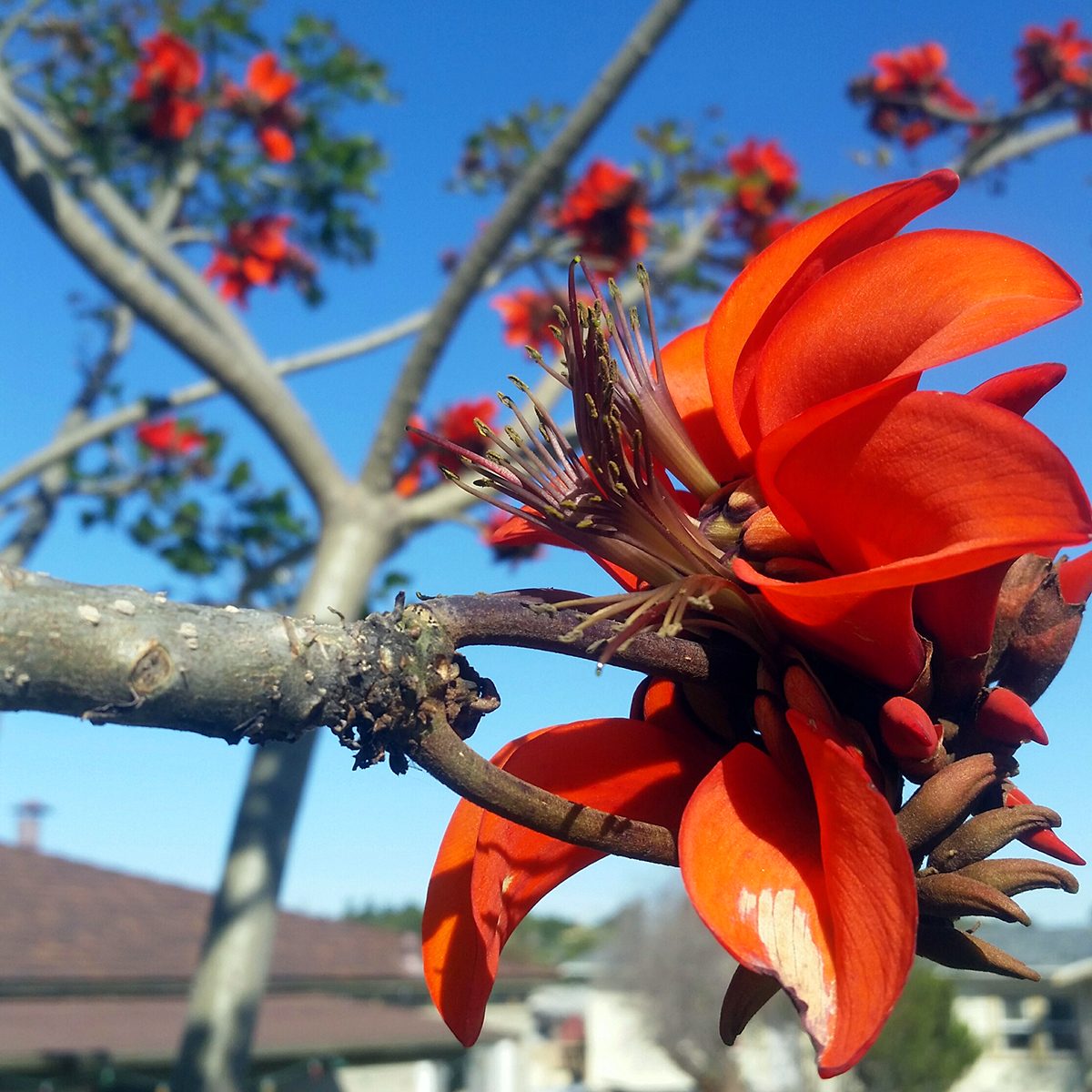Since we humans have pulled our lumbering and flipper-legged mass out of the primordial ooze we have been hard-wired to fear the darkness. The setting sun would have us scurrying under rock, climbing into canopy or slithering into backs of caves. Huddled and shaking we clung to each other waiting for the warmth and relative safety of the morning light. For in the darkness lies danger. Danger known and danger barely perceived. For it was a night such as this that brings me to your internet doorsteps today.
In the darkness outside of my (slightly more modern) cave a great terror arose from over the Pacific Ocean. The great storm. Dark and terrible it rained down it’s icy droplets and howled through my village (of San Diego) with apparently powerful winds. All of which I slept through without stirring a titch. I didn’t even wake up when my beloved coastal coral tree was split in three and came crashing down on my roof, my fence, and the street respectively.
All my regular readers will know that this tree was my absolute favorite tree of all. I have written about it so often. The way I propagated it from a measly branch cutting, how it magically grew faster and bigger than any other plant I’ve ever planted, and how I prune it so thoughtfully and thoroughly.
The last link there being one I should have revisited last winter. The winter I decided to not do my annual pruning because I was “too busy” to tend to it. Too busy to remove the great mass of branches and leaves that is likely the very reason why she couldn’t withstand the night terror of a storm that did her in. Mostly.
Friday morning found me doing the normal routine. Butt scratching, a shower, bask my glorious facial hair in the sun of a hundred gods, and then walk the dog. I left the house and began the walk when I realized there was a giant mass blocking our path. In my morning haze, it took a few ticks before I realized what had occurred. This was what I walked right into…











